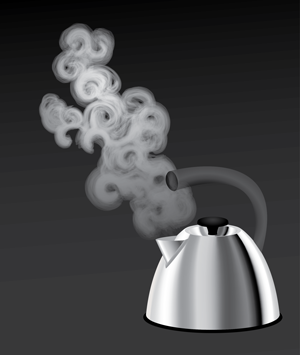Module 5 – Heat, Temperature, and Thermal Equilibrium
Introduction
You have two pots of water sitting on a stove. In one, the water is moving about, tumbling, and bubbling. In the other, the water is still. Which is boiling? From common experience we know that as we heat water it begins to move, tumble, and bubble; this is the state we commonly call boiling. This familiar observation lies at the heart of understanding temperature and heat. Temperature is a measure of the average kinetic energy of atoms and molecules in a substance (Ostdiek and Bord 2018, 170). Heat is the flow of this kinetic energy from one body to another. As the water in the pot is heated, its molecules begin to move more rapidly; once it is boiling, this increase in motion becomes visible as the tumbling and bubbling we see.
Figure 1
Temperature
The temperature of a system is defined as the average energy of the microscopic motions of the particles, atoms, or molecules in the system.-
•In a solid, these motions are primarily the vibrations of the atoms about their location in the solid.
-
•In a monatomic gas, the microscopic motions are the translational motions of the gas atoms.
-
•In a multiatomic gas, the vibrational and rotational motions of the atoms in the molecules are also included with the translational motions.

Figure 2
Heat
It has been observed that when a higher temperature object is in contact with a lower temperature object, heat will be transferred to the lower temperature object.-
•The objects will reach the same temperature.
-
•If there is no loss of heat to other objects, the two objects will maintain a constant temperature.
-
•The two objects are then said to be in thermal equilibrium.

Figure 3
Procedure
This experiment consists of three parts.1
Open the experiment instructions and worksheet.
-
•Heat, Temperature, and Thermal Equilibrium Experiment Instructions (HTML or PDF)
-
•Heat, Temperature, and Thermal Equilibrium Experiment Worksheet
2
After you have thoroughly read the instructions and worksheet, open the experiment simulations in which you will conduct the experiment and collect your data.
-
•Part I Simulation: Experiment link
-
•Part II: Experiment link
3
Record your data in the worksheet. (You will need it for the experiment report
assignment in WebAssign.)
